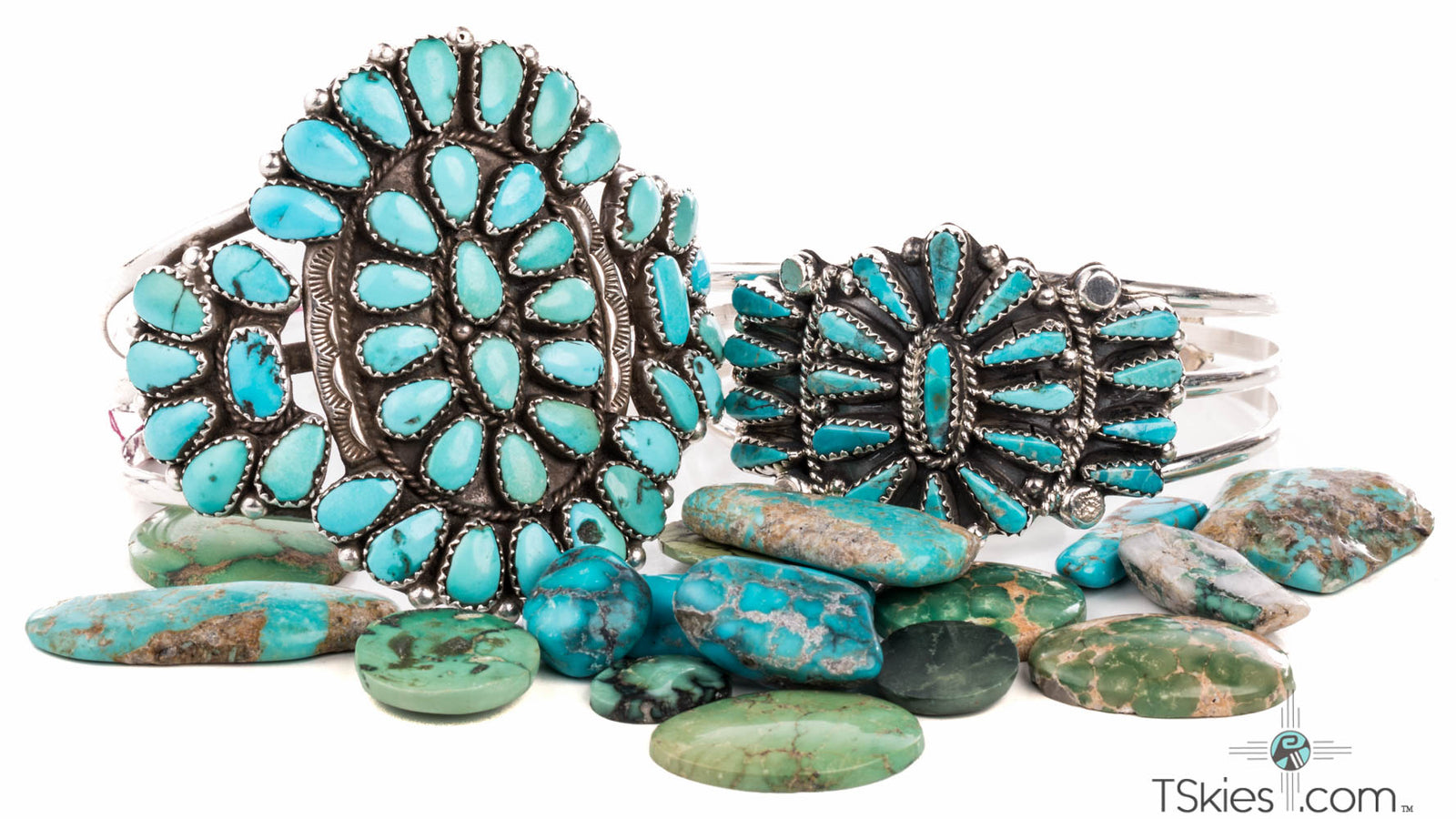Rock Solid Wisdom From A Navajo Silversmith

“It’s all about asking the right questions.” That’s what Navajo silversmith George Francis tells me as he hands me a box of what appear to be arrowheads. Then he tells me that these are indeed “Indian” arrowheads. Made in India. Without asking the right questions, someone who purchased them as authentic would be getting something very different than they expected.

Fake arrowheads from India
One of the difficulties in purchasing Native American jewelry is determining the materials used to create a piece. In today’s market, there are several imitation or substitute materials that can be used to create jewelry which appears to be turquoise or other precious stones. As the box of arrowheads demonstrate, some of these materials come from China or other countries. Pieces are made to look like what customers want, but at a much lower production cost due to much cheaper materials. For those wishing to purchase a collectible or heirloom piece, or simply an authentic piece of Native American handcrafted jewelry, it’s important to know some questions to ask before you buy.
The first step in the process of finding the right piece is to determine what you want. Are you looking for an heirloom bracelet or a collectible quality necklace? Or are you only looking at appearance, something that looks like the more expensive type of jewelry? Your budget may determine which piece suits you. Purchasing a less expensive piece doesn’t always mean you’ve gotten a deal. Such a purchase comes with a few caveats. The difference in price may be due to the skill or name recognition of the artist. An apprentice piece would not sell for as much as a well-known master artist’s work. But price can also be due to the difference in materials used to create what you’ve purchased.
Once you’ve decided what you want, becoming an educated buyer means learning a bit about the market. Due to the slowdown in turquoise mining, natural turquoise mined in the US has become a limited commodity. The stones are still out there, Francis says, but many people who have them are sitting on them hoping the price will go up.
Because turquoise is highly prized for jewelry, this scarcity has created an opening for other types of lower-quality stones to enter the market. Block or synthetic turquoise, from China, and even magnesite dyed to look like natural turquoise, are some of the cheaper alternatives used in jewelry. If the piece is made from magnesite dyed to look like turquoise, over time the stones may fade or lose the dye altogether, leaving you with a string of white stones that don’t resemble what you purchased at all.

Dyed Magnesite

Natural Turquoise Being Weighed

Synthetic Turquoise Being Weighed
These differences mean that when you find a piece of jewelry you like, the question to ask is not only “is it turquoise?”. If it is synthetic turquoise, the quality will be much lower, but it is indeed “turquoise”. What you need to find out is if it’s natural turquoise. You may be tipped off by the price, but you can’t always count on that.
Being an educated buyer is the safest way to ensure you purchase what you are looking for. Knowing the right questions to ask, knowing the seller and knowing what you want makes your search for the perfect piece of jewelry end with finding the right piece for you.
Real turquoise was made with the bracelets on the left while block turquoise was made with the bracelets on the right.









